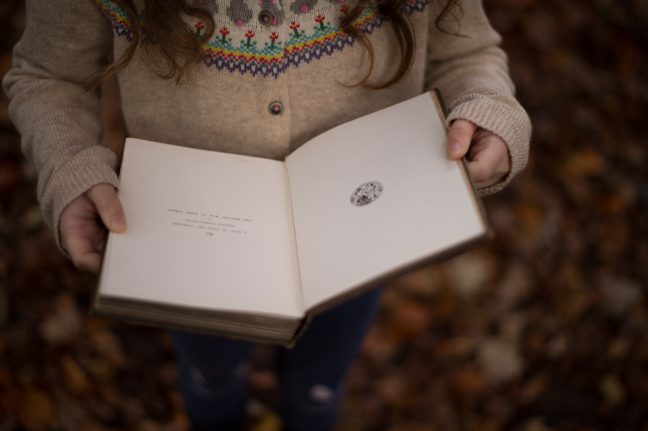Today I’m reflecting on a range of readings that have inspired me or changed by thinking in 2018. These works are all ones that I have read in the past year – they may be newly published or just new to me. Some are book length and some are short blog posts but they all relate to my professional practice as an archivist and public historian in some way.
Marika Cifor, Michelle Caswell, Alda Allina Migoni, Noah Geraci “What We Do Crosses Over to Activism: The Politics and Practice of Community Archives,” The Public Historian 40, no. 2 (2018): 69-95.
This article does an excellent job of situating community archives in relation to public history practice. and activism. It also comments on the rise of community archives and the implications of community archival growth on the archival and public history community. As a public historian who works in a community archive this article resonated with my work so much. By addressing community archivists on their own terms this paper argues that ,”whether they understand their work as activism, advocacy, or community organizing, community-based archivists are conceptualizing these archives as a means to challenge injustice, discrimination, and oppression to enable the creation and sustainability of stronger communities and a more just environment for
all.” (p. 92).The article draws heavily on literature connecting community archives to activism and recognizes activists as archival stakeholders. Beyond providing excellent background on the topic of community archives Cifor et al. also analyze data collected via interviews with seventeen individuals involved with community archives. The findings from these interviews provide insight into community identity, mixed feelings about activism, the relationship between archives and advocacy, and power structures in archival practice.
Sources and Methods in Indigenous Studies edited by Chris Anderson and Jean M. O’Brien
This book compromises essays from Indigenous scholars from across academia with a focus on critical reflections on Indigenous methodology and approaches to research. The section on Indigenous history is of particular relevance to historians in Canada who are looking to broaden their understanding of Indigenous concepts of research. The book includes a robust section on kinship as well as a section on feminism, gender, and sexuality. I found the “All in the family” section particularly thoughtful in its approach to defining (or not choosing not to define) concepts of kinship and community.
This is an Honour Song by Leanne Betasmosake Simpson
This beautifully written book is a collection of essays, poetry, and narratives connected to the 1990 Oka resistance. The book contains pieces written by Indigenous and non-Indigenous scholars and activists. I highly recommend this book to anyone looking to broaden their understanding of Indigenous resistance and colonial relatives within the land currently known as Canada.
Meghan Hillman, “NCPH’s Own Repair Work at #ncph2019 and beyond,” History@Work, 29 August 2018
I’m including this blog post not only because I love NCPH, but because I think it represents the type of reflection and transparency that more professional organizations need to be engaged in. Written by NCPH staff member Meghan Hillman, this post looks at the ways NCPH is looking to implement recommendations on how it can make members and attendees feel welcomed and safe at NCPH events. The post specifically addresses planning for the inclusion of pronouns on NCPH badges and the availability of all gender washrooms at conference events. To me, this post represents a lot of thought and reflection on the past of NCPH and the beginning of steps toward making conference spaces more accessible to trans, non-binary, and gender non-conforming folks.
Seven Fallen Feathers: Racism, Death, and Hard Truths in a Northern City by Tanya Talaga
I consider this a must read for Canadians and folks engaged in building relationships with Indigenous communities. This book does an excellent ability of placing contemporary realities and racism in historical context. It’s not an easy read but it is a tremendously important book that talks about the deaths of seven Indigenous high school students in Thunder Bay, Ontario between 2000 and 2011. All seven of these students were forced to leave their home to ‘continue their education’ and were living hundreds of miles away from their families and communities at the times of their death. Talaga connects present day dispossession to ongoing educational and social inequalities and the long legacy of residential schools and colonialism in Canada.
Alicia Kerfoot, “Reframing the Pregnancy Story: On Literature, Stitching, and Lost Narratives,” Nursing Clio, 25 October 2018
This is a really powerful blog post that addressing grief, loss, and the historical practice of embroidered morning pieces. Beautifully written this post interweaves personal history, histories of gender and health, and representations of loss in textile art and literature. The personalization of history is one of the reasons why I love the Nursing Clio blog, there is tremendous value in sharing stories, personal connections, and discussing history through the lens of individual experiences. As a note, this post has the potential to be triggering to anyone who has experienced pregnancy loss or infant death.
April Hathcock, “Racing to the Crossroads of Scholarly Communication and Democracy: Bu Who Are We Leaving Behind?,” In the Library With The Lead Pipe, 22 August 2018
I’m a huge fan of April Hathcock’s writing, scholarship, and work. This piece is no exception, Hathcock tackles scholarly communication and access through the lens of intersectionality. It takes a hard look at open access, the democracy of access to information, and the ways in which just posting content online does not make it open or accessible to all. Hathcock calls for reflective interrogation of race and communication practices; challenging scholarly communication folks, librarians, and authors to take a critical look at diversity, representation, and professional practices.
Photo credit: Annie Spratt on Unsplash

